larbike
Member
- Joined
- Apr 23, 2010
- Messages
- 56
- Reaction score
- 89
I was out at the range a few weeks ago shooting my M-28-3 Highway Patrolman. This gun was my first .357 revolver which I purchased new back in 1985, and it has seen many thousands of rounds over the years with zero issues. On this occasion though the revolver misfired after about 20 rounds of magnum ammo. I noticed that the cylinder would not turn when the trigger was pulled or the hammer was cocked manually. I took the gun home and removed the side plate to see what was going on. I found that the trigger stud had sheared off! A search on google revealed that the replacement for the stud required sending the gun back to Smith & Wesson for a fairly expensive and lengthy repair process. Typically this involves pressing out the stud, replacing it with a new one, and then re-bluing the gun. I really dislike having to send guns out for repair if I can help it. My father was a machinist and I inherited his tools and equipment when he passed a few years ago. Although I am not a machinist by trade, I often worked on projects with my father, so I decided to attempt the repair myself. I started by locating a solid steel roll pin that I might be able to use as a replacement. I measured the broken stud and ground down the replacement pin to the same diameter (0.100 inch). I then carefully placed the revolver in my drill press and drilled a hole in the frame concentric with the broken stud. I drilled the hole 2 thousandths of an inch smaller than the diameter of the pin to allow an interference fit, and then drilled deep enough to retain the pin but not deep enough to perforate the frame. I did some trial fitting and trimmed the new pin just enough to allow the sideplate to fit flush on the frame as before. For the final assembly I added some red Loctite to the pin and hole. I then tapped the pin with a brass hammer until it was seated fully in the drilled hole. I allowed the Loctite to set up for 24 hrs before final assembly. I checked the revolver's single and double action pulls and checked the hammer for push-off and everything was working fine. A trip to the range showed the revolver to be working flawlessly after a full box of fifty .357 rounds. I also decided to attempt this type of repair because I don't ever plan on selling this gun due to it's sentimental value and so far the repair is holding up splendidly!
Attachments
-
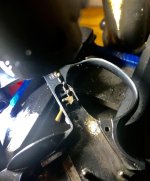 53BEBEBC-772F-4D2F-8D16-46FFEB8796E2.jpg69.8 KB · Views: 366
53BEBEBC-772F-4D2F-8D16-46FFEB8796E2.jpg69.8 KB · Views: 366 -
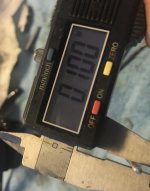 B799C1E9-A837-4115-B83F-4E00A734B27C.jpg55.9 KB · Views: 317
B799C1E9-A837-4115-B83F-4E00A734B27C.jpg55.9 KB · Views: 317 -
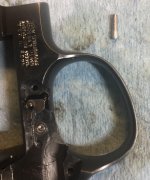 275B3B54-6658-4392-95A8-2171E134F0DB.jpg77.1 KB · Views: 356
275B3B54-6658-4392-95A8-2171E134F0DB.jpg77.1 KB · Views: 356 -
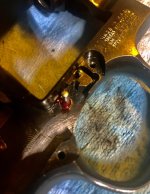 7400715E-620C-47B1-9BEC-FF30315A23D0.jpg69.3 KB · Views: 337
7400715E-620C-47B1-9BEC-FF30315A23D0.jpg69.3 KB · Views: 337 -
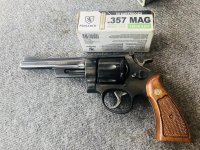 46350E6F-3E82-4D9F-8C20-6944406A7A29.jpg138.1 KB · Views: 319
46350E6F-3E82-4D9F-8C20-6944406A7A29.jpg138.1 KB · Views: 319
